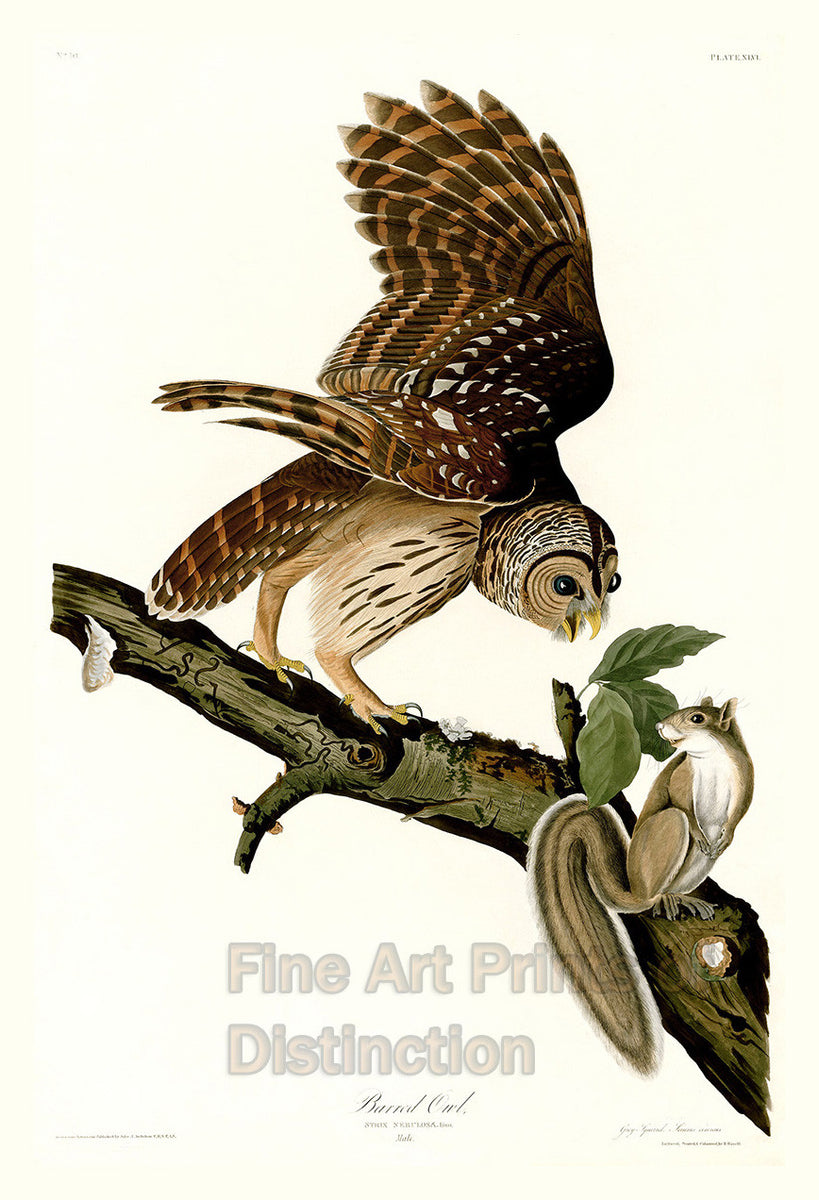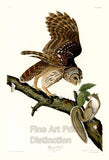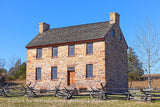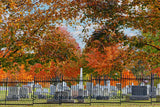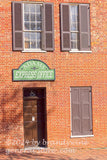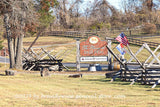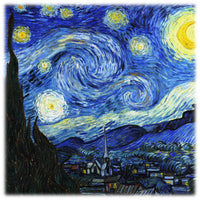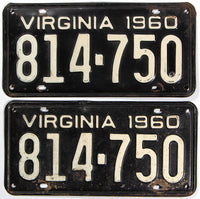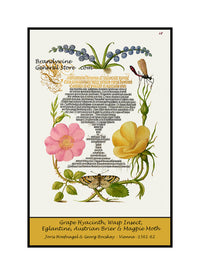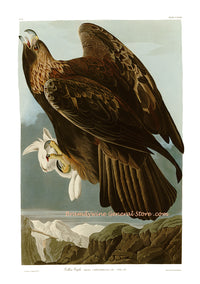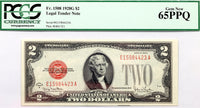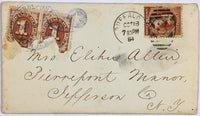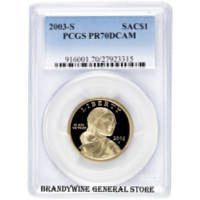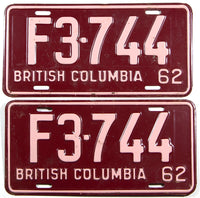Barred Owl by John James Audubon
An archival premium Quality art Print of the Barred Owl by John James Audubon for his book The Birds of America for sale by Brandywine General Store. This owl is also known as the hooting owl, or hoot owl. The picture shows the Barred Owl setting in an oak tree branch ready to strike out at a grey squirrel. His wings are still up in the air like he had just landed beside the unfortunate squirrel. The squirrel doesn't look very upset though, he must have a hole in the tree somewhere close so he knows he can escape. Syrnium Nebulosum - Audubon said of this bird, "The Barred Owl is found in all those parts of the United States which I have visited, and is a constant resident. In Louisiana it seems to be more abundant than in any other state. It is almost impossible to travel eight or ten miles in any of the retired woods there, without seeing several of them even in broad day; and, at the approach of night, their cries are heard proceeding from every part of the forest around the plantations. Should the weather be lowering, and indicative of the approach of rain, their cries are so multiplied during the day, and especially in the evening, and they respond to each other in tones so strange, that one might imagine some extraordinary fete about to take place among them. On approaching one of them, its gesticulations are seen to be of a very extraordinary nature. The position of the bird, which is generally erect, is immediately changed. It lowers its head and inclines its body, to watch the motions of the person beneath, throws forward the lateral feathers of its head, which thus has the appearance of being surrounded by a broad rut, looks towards him as if half blind, and moves its head to and fro in so extraordinary a manner, as almost to induce a person to fancy that part dislocated from the body. It follows all the motions of the intruder with its eyes; and should it suspect any treacherous intentions, flies off to a short distance, alighting with its back to the person, and immediately turning about with a single jump, to recommence its scrutiny. In this manner, the Barred Owl may be followed to a considerable distance, if not shot at, for to halloo after it does not seem to frighten it much. But if shot at and missed, it moves to a considerable distance, after which its whah-whah-whah is uttered with considerable pomposity. This Owl will answer the imitation of its own sounds, and is frequently decoyed by this means." Audubon bird print #46

